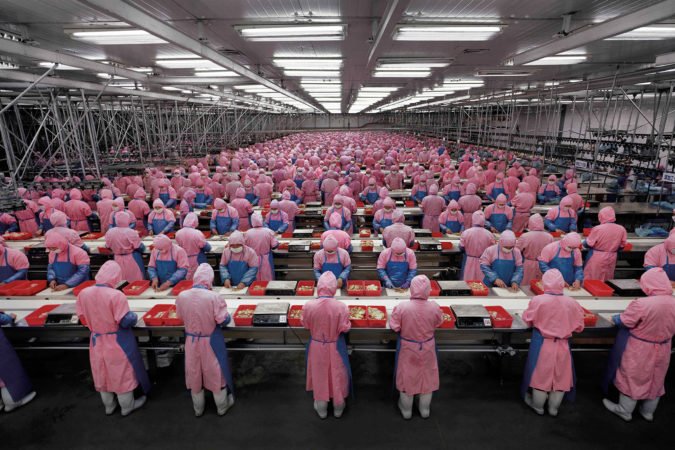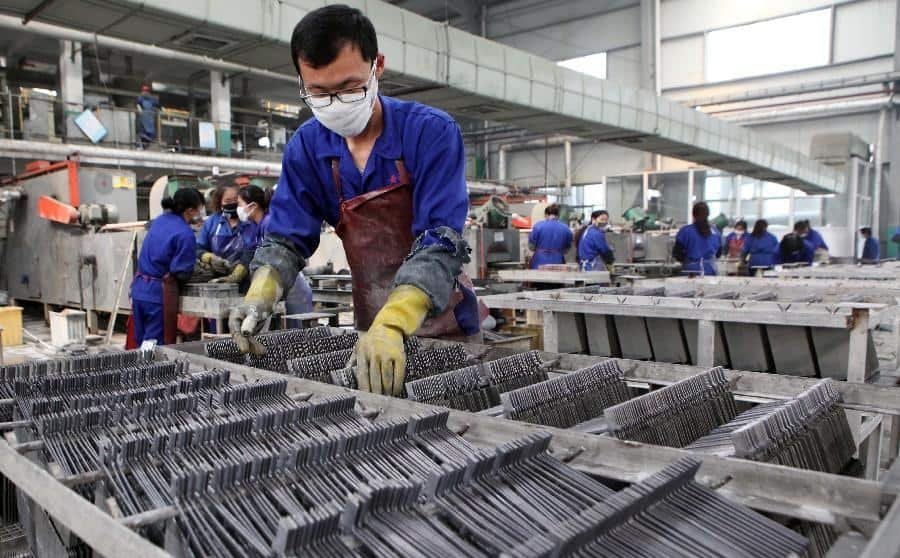China, a low productivity superpower?

In the space of just a few decades, China has risen to become a world and certainly an Asian regional power. And now China and the US have locked horns in a great power struggle over trade, foreign investment, intellectual property, technology transfer policies, industrial policy, cybersecurity, and their respective roles in East Asian affairs.
But it is important to know that the Chinese economy is backward in many respects. Indeed, it still has very much a low-productivity economy.
China’s low-productivity economy
Over the past several decades, China has been on a course of economic catchup (or “convergence”) towards the “frontier” occupied by world economic leaders like the US and Germany. So where does China stand today in terms of its economic catchup?
China’s labour productivity has converged from 15 percent of the world frontier to only 30 percent over the past two decades, according to the IMF in a recent report. This has occurred as many workers have shifted from low-productivity agriculture to higher-productivity industry and services, and also as there has been upgrading within each sector. Since the 1990s, the employment share of agriculture fell steadily from 60 percent to below 30 percent, while the share of industry and services rose to 28 and 46 percent respectively.
Economic catchup has been greater for the industrial sector than for services. Industrial productivity has converged from 15 percent of the frontier at the end of the 1990s to about 35 percent today. Indeed, China has a rather advanced industrial structure for its income level, as the share of high-tech in industrial value-added was 43 percent in 2015. This has been driven both by the upgrade from low-tech to high-tech sectors and productivity increases in each industry.
Convergence has been slower for the services sector where productivity has converged from 10 percent of the frontier at the end of the 1990s to 26 percent. Overall, the weaker performance of the services sector is due to two main factors. Most services are not internationally tradable, which means that they are not exposed to international competition. And the services sector is protected from international competition by more trade barriers than is the industrial sector.
Falling productivity growth

Manufacturing in China
What is disturbing is that China’s productivity growth has declined steadily since the global financial crisis (GFC) exploded in 2008. How so?
In response to the economic shock of the GFC, the Chinese government kept the economy afloat by massive infrastructure spending, some of which was of questionable productive value. Large amounts of finance were channelled through state-owned enterprises (SOEs), which are much less productive than China’s private sector enterprises.
The IMF estimates that China’s total factor productivity (TFP) growth since the GFC has only averaged 2¼ percent a year, which is only about half of its average in the decade before the GFC. In fact, the decline in TFP explains most of the fall in GDP growth between the two periods.
Looking ahead, as the economy shifts more from industry to services, overall productivity growth will slow further, as the industrial sector tends to have higher productivity (industrial productivity is about 1.3 times as high as services productivity). And as the Chinese economy moves closer to the world productivity frontier, productivity growth will also slow further as more gains in productivity becomes harder to realise. The IMF estimates that China’s economic growth rate could slow from the present 6+ percent rate to 4 percent by 2030.
How to ignite productivity growth?
For China to graduate to a high-productivity economy, it will be essential to undertake a wide array of reforms to enhance international and domestic competition and improve the role of the market.
In recent times, China has undertaken a gradual opening to foreign trade and investment which can be an important motor for productivity growth. Nevertheless, China remains less open for services and foreign direct investment than other G20 emerging market economies.
Ironically, if China responds to Donald Trump’s demands by further opening up its trade and foreign investment regime, and implements other structural reforms like reducing business regulations and removing internal product market barriers, this would provide a positive boost to China’s productivity.
The IMF estimates that if China unilaterally eliminated tariffs on goods imports, it could increase China’s real GDP level by about 3 percent in the long term while liberalizing FDI could increase GDP by a further 6 percent. Against that, a preferential or “managed trade” deal between the US and China, which involved increased Chinese purchases of US products like planes and soybeans, would result in a backward step for free trade and productivity, and also weaken the rules-based global trading system.
China’s SOEs a drag on productivity
China’s SOEs are also a drag on productivity. Their profitability remains weak and about a third of SOEs are loss-making. And unfortunately, some recent reforms have increased the importance of SOEs and worsened the environment for private businesses.
Productivity would receive a welcome boost if the role of SOEs was curtailed, and the role of the market in the economy was increased. To improve productivity and economic efficiency, policies to increase lending to the private sector should be complemented with policies that reduce the share of credit to SOEs and remove their pervasive implicit guarantees and other advantages.
Productivity also suffers from China not having a single, integrated economy. It is fragmented regionally by barriers favouring local businesses. Measures should be taken to remove various forms of local protectionism (like requirements to use designated service providers, local registration requirements). The hukou system also discriminates against rural migrants’ access to social services in large cities, thereby inhibiting their productive contribution.
Precarious outlook

Image: SCMP
Looking ahead, the global economic landscape looks precarious compared with the golden era of rapid Chinese economic growth. Global demand is now weaker and globalisation may indeed be in reverse, and China’s access to leading technologies may be more restricted by US and European policies.
China’s future may also be constrained by its own domestic politics. Under President Xi Jinping, there is growing emphasis on the role of the state in the economy, which will hold back productivity growth. There is also a strong desire to hit excessively high short-term growth targets, even if it means adding to China’s already very high debt levels.
Understanding Chinese power
How could a country with these productivity challenges be such a world power?
Although China’s productivity is low (and its social and political rights and freedoms weak), its economy rivals the US in total size, thanks to its enormous population which is four times higher than America’s (on a PPP basis China would have the world’s biggest economy, while based on market prices, it has the world’s second-biggest economy).
While productivity is a sign of economic and technological sophistication and standards of living, overall economic size also matters. A large economy like China’s has enormous market power. Countries fall over themselves seeking access to China’s market. Countries even pull their punches when it comes to human rights, democracy and other issues just to gain market access.
China has enormous financial power which it is using for initiatives like the Asian Infrastructure Investment Bank and the Belt and Road Initiative. Hyper-advanced, though small economies like Singapore’s could never match China’s financial power, even though Singapore’s GDP per capita is the highest in Asia and more than five times higher than China’s.
China has also been able to use its financial (and strategic) power to develop high-tech companies (like Huawei) and technology industries, such as through the Made in China 2025 initiative. Many of these technologies are “dual-use”, meaning that they can be used for both peaceful and military aims.
China’s financial power is also being heavily invested in its military which it has used to occupy and militarise the South China Sea, and which, according to some analyses, is capable of challenging the US in Asia. According to a recent University of Sydney report, “America no longer enjoys military primacy in the Indo-Pacific and its capacity to uphold a favourable balance of power is increasingly uncertain”.
Indeed, it is clear that Chinese President Xi Jinping is becoming increasingly impatient for Taiwan to be unified with mainland China, forcibly if necessary, even though Taiwan is superior to China in all respects, except for size. Taiwan is now a mature democracy, with an advanced and sophisticated democracy.
Lastly, we must say that “determination matters”. Even a country with low productivity can, through strong determination, become a strong military power, and threaten the primacy of economies which are more advanced. The case of backward, but threatening, Russia is another case in point.
History shows that one of the best sources of international security and stability is a balance of power. This is why the democracies of the Indo-Pacific — notably India, Japan, Indonesia and Australia — must strengthen their military capacities and strategic cooperation, and employ maximum efforts to convince the US to remain a serious Indo-Pacific power.
Read more from Professor John West



















